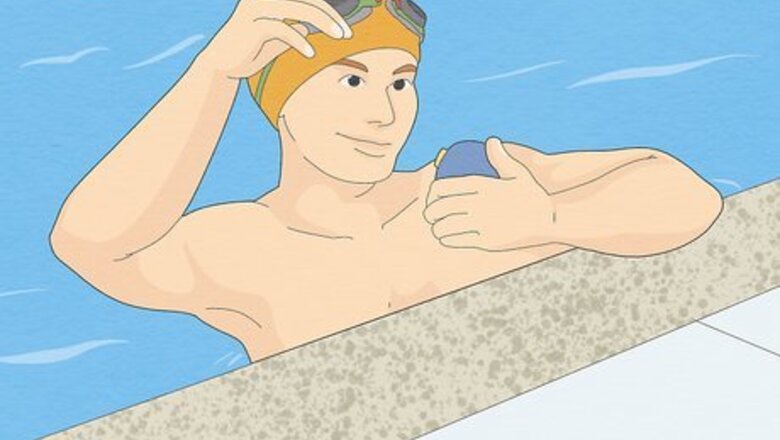
views
Becoming a Better Swimmer (Intermediate)
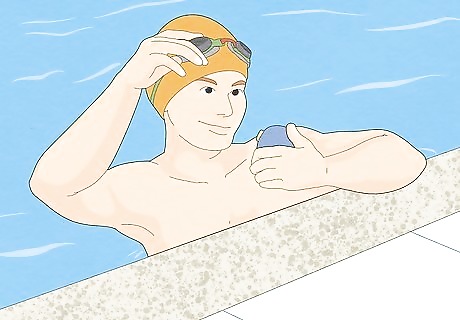
Swim drills and time yourself. Drills will help you pay attention to the clock and your times. They allow you to take what you’ve been working on (like your strokes) and immediately apply it to your regular swimming habits. Play “catch-up” while you swim freestyle. Catch up drills are a classic way of improving your freestyle stroke. Their goal is to smooth out and lengthen your stroke by making you pay attention to your strokes. You keep one arm out in front of you the entire time you swim, and wait until the arm taking a stroke “catches up” with the other one. For more interesting swimming drills, ask other swimmers, or go online. There are plenty of fun suggestions to keep your workout interesting. Challenge yourself by setting a yardage goal to complete each week. A good start is 2000 yards or meters a workout (forty lengths).Your goal is to become a better swimmer and nothing betters swimming like more swimming.

Swim year round. Join a gym that has a lap pool (25 yards/meters at least). Swimming throughout the year will increase your strength, endurance, and stamina. It will also keep you in contact with fellow year-rounders who can support your efforts.
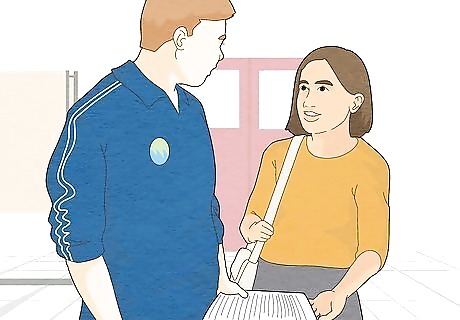
Join a swim club. When you don’t have anyone to talk with at the pool, swimming can feel like a chore, and a lonely one at that. Going to work out with other swimmers might score you free training advice for free. At the very least, you’ll make friends who share your desire to become a better swimmer. This will lead to a sense of accountability, something that really helps when dragging yourself out of bed at five in the morning.
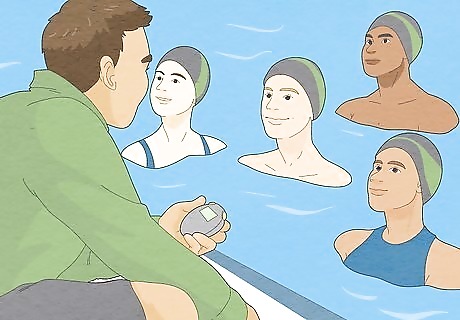
Join a swim team or attend stroke clinics. Both are great opportunities for all swimmers to get technique help on each swimming stroke. They are also great ways to meet fellow swimmers who will help bolster your goal to become a better swimmer.
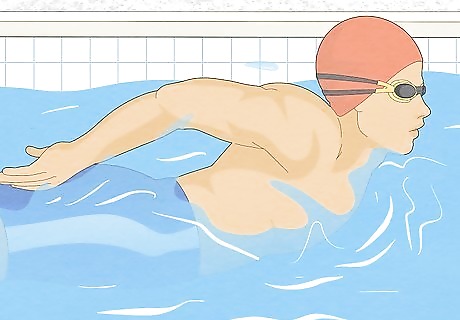
Learn your strokes. There are four basic strokes (butterfly, backstroke, breaststroke, and freestyle) and you should try to learn them all. While you’ll always have a favorite, being a well-rounded swimmer will help to keep swimming challenging and interesting. When you swim all strokes, your use more muscles. Your body will also get a much better workout. You’ll see and feel the results faster when you utilize all four strokes. The risk of injury while swimming is decreased because you aren’t always stressing the same muscles with the same movements. The musculature is more balanced. The skills you learn from one stroke transfers into skills into a different stroke. For example, the underwater undulation you employ when kicking off the wall into breaststroke is transferable to the underwater undulation you’ll use when starting in backstroke.

Learn flip turns. Adding flip turns eliminates the stop-and-start rests at the end of each lap. You’ll become a better distance swimmer when employing these maneuvers. You’ll also save energy when you push off the wall, propelling yourself into a good position to begin your stroke. It’s also a great way to see where your opponents are. Exercising your core while you learn will help you accomplish the technical aspects of a flip-turn. They require a full somersault, a trunk flexion, and rapid trunk extension.- Keep your chin down when using a flipturn in freestyle. Begin the turn about an arm’s length from the wall. You’ll begin to do a somersault or a “flip.” Your chin should come close to your chest. Your knees should come close to your chest as well. Plant your feet against the wall and twist your torso. Put your hands together and streamline your body as you push away from the wall. When you’re doing a flipturn in backstroke. About one yard or meter from the wall, turn around to the front by reaching around with your leading arm. Look around with your head so your body will naturally follow. Keep the leading arm extended ahead and flip. Push off from the wall.

Find and register for swimming lessons, classes, clinics, and races near you. Check online to see what’s available. Look for instruction that is above your level. Challenge yourself!

Learn how to time yourself. Keeping an eye on the clock will help you ascertain how efficient your are in the water. If you are doing sets, make sure they are timed (ie four fifties on the minute with ten seconds break between the next round).

Swim as often as possible. With an increase in distance and speed, your technique will improve dramatically. Set new goals as you leave old ones behind!
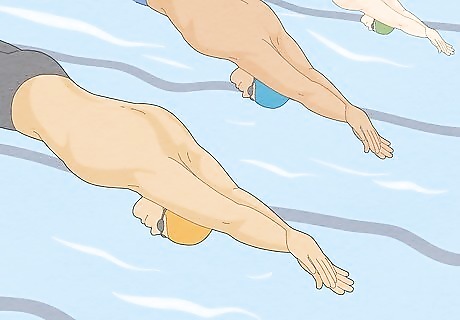
Participate in local swim meets. Through the swimming community, there are plenty of opportunities to compete in swim meets, even as an adult. A competition is a way to boost your swimming by providing a new, determined, focus.
Becoming a Better Swimmer (Beginner)
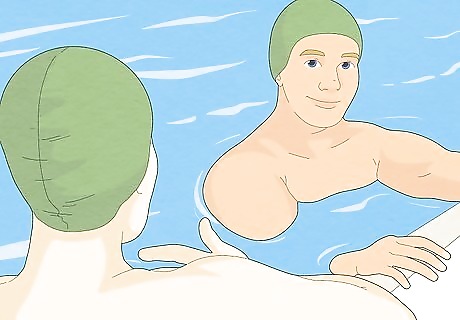
Get help from a friend. Having a friend in the water with you is comforting. They can remind you what you need to be doing. They can hold you in specific positions while you get a feel for them.
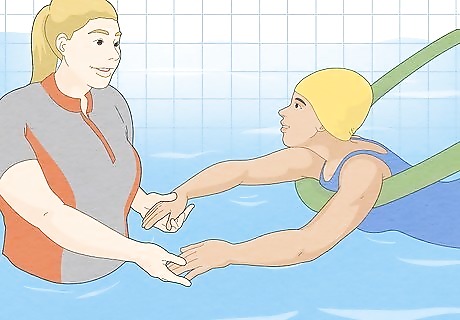
Take swimming lessons. Whether you are a child or an adult, there is a swim class out there for you. Being around people who are there to teach you will ease any tension or apprehension you might feel. Having a weekly “date” at the pool will help you be accountable to the learning process.
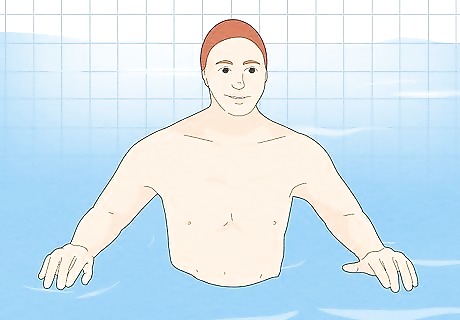
Get a “feel” for the water. Learning how your body moves and feels in the water is very important. It’s something we’re not used to, but once you get comfortable, water can be very comfortable and soothing. Start off in the shallow end and begin to move your hands and arms around. Push your hands against the water to feel the resistance. Cup your hands and pull them through the water (sculling). That pressure you feel is what is going to eventually help propel you through the water effortlessly. Bend your legs and let the water come up to your chin. Continue to move your hands and arms. Even when you are beginning to learn strokes, start each session like this.
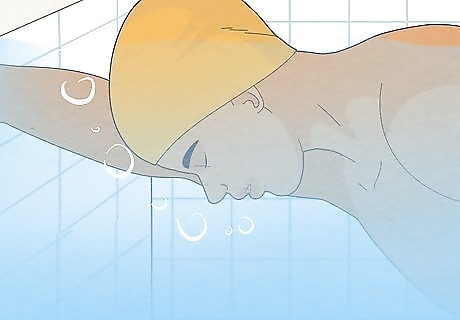
Blow bubbles. The most important (and scariest) part of swimming is learning how to breathe. But once you learn how to exhale into the water, you will be on your way to more efficient and graceful swimming. Reach forward and hold onto the edge of the pool in the shallow end. Put your face in the water and blow out. When you are done, turn your head to the side and take a breath. Push your face back into the water and exhale. Try to create a long, steady stream of bubbles. Repeat until you are comfortable. Exhaling into the water and timing your breathing might be frightening at first, but with practice you’ll soon be ready to learn some basic strokes.

Practice floating. It sounds obvious, but floating is a tough skill to learn, and harder to master. In an emergency, knowing how to float can save precious energy and possibly your life. Spend time working on your body position. Learn to float on your stomach and your back. Relax. You have to relax. While learning how to float on your back, look at the sky or the ceiling and breathe deeply. Fill your lungs with air with each breath. Hold your breath for a moment and let the experience of being weightless atop the water calm you. Reach up with your arms if your legs sink. This will act as a counterbalance, bringing your legs up. Have a friend help. Having someone next to you to place a reassuring hand at the small of your back can ease your tension immeasurably. Tighten your abdominal muscles. Engaging your abdominal muscles will help you keep your appendages afloat easier. Float on your stomach. Let your arms go limp and free. Raise your head or tilt it to the side when you need a breath.

Tread water. Treading water can help you catch your breath and keep your head up without actually swimming. Practice this in the deep end with a friend. Move your legs in an “eggbeater” fashion. Start with your knees bend and your legs slightly wider than hip-width apart. Then pedal your legs in opposite directions. Let your kicks be relaxed and easy. Cup your hands and circle them in medium-sized (about two feet total) infinity signs. If you need to come up further, kick harder with your legs and arms to propel yourself above the rip of the water.

Practice kicking. This is a great way to separate the parts of the strokes before you put them all together. Hold on to the side of the pool. Put your face down and extend your body straight out. Turn your feet in slightly. Begin small kicks. Try to keep them small and efficient, rarely breaking the surface of the water. Your legs should bend, but only slightly.This is a flutter kick. Practice a front stroke. This is also known as freestyle. Bring one arm out of the water so that it is reaching forward. Place it back into the water with a slightly cupped hand, then pull your arm through the water. As your pull the water down, your stroke will naturally end at your hip. Alternate arms.
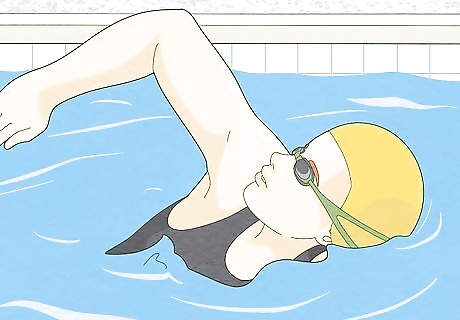
Learn other strokes. As your skills grow, watch other people and emulate what they do. Most of all, have fun in the water and let its resistance turn you into a stronger, more graceful swimmer.
Becoming a Better Swimmer (Advanced)
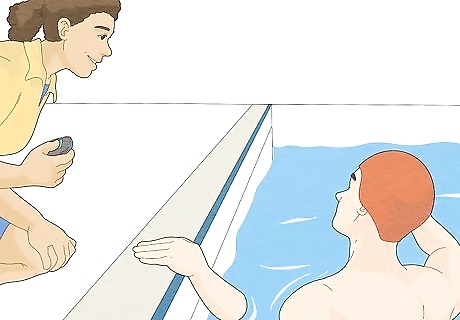
Get a coach. Having someone monitoring your strokes, your breathing, and your technique is a great way to get a new perspective on how you approach your swim style. A good coach standing on the pool deck working with a group of swimmers is the best way to improve your overall swimming performance. If you can’t find a coach, have a swimming buddy whose technique you admire watch your workout.
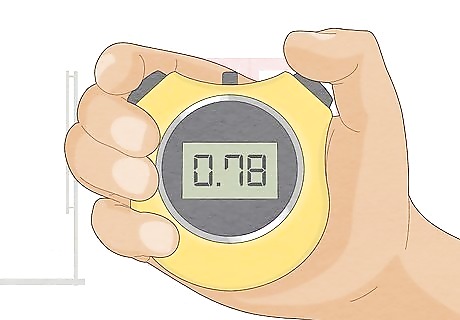
Record yourself. Aside from a coach, recording yourself is a great way to get perspective on how you move through the water. You’ll see bad habits you might not have been aware of as well as strengths you can improve upon.

Find balance between your long stroke and your short stroke. A long stroke is great; you’re using good propulsion, low drag, and glide. A short stroke is great, too, but you can waste energy on strokes that are too short and scrappy. Know your stroke rate. It’s a powerful aspect to know because it will allow you to make needed changes to your strokes to improve your style. Ask a friend or coach to time you for ten strokes with a stopwatch, not including dives or push-offs, just regular swimming. Count the number of strokes you take in the ten seconds. This is your stroke rate. Adjust your stroke as needed.
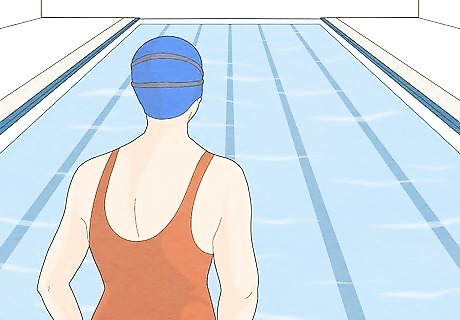
Search for long distance swims in your area. A long distance event is any distance-based swimming event more than 1650 yards or 1508.8 meters. It can also be any time based even equal to or greater than one hour and can be in a pool or any body of water. Long distance swims are a great way to focus your expertise in your training for an fun event. Sign up with friends and make a weekend getaway out of it!
Acquiring Equipment to Become a Better Swimmer
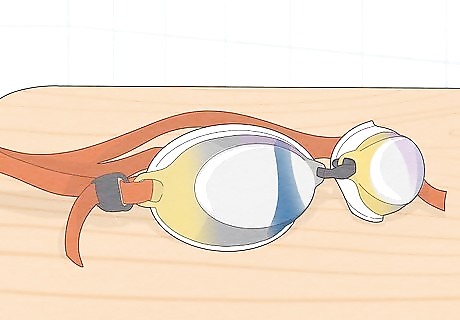
Get comfortable goggles. They will protect your eyes from the sting of chlorine. Once you get used to them, you’ll discover a whole new way of looking at the world. Buy a pair that does not pinch at the nose. Good goggles should be snug but not pinch. Push them against your face. If they stick around your eyes, that is a good sign they will not leak when you are in the water.

Buy a swim cap. It will protect your hair against chlorine damage and will keep your hair out of your face while you are swimming. Most importantly, swim caps make you more hydrodynamic in the water. Latex caps are protect well against chlorine but are difficult to put on and remove. Putting a bit of talcum powder in the cap before you put it on and while it’s dry helps. Don’t use if you have a latex allergy. Silicone swim caps are the most popular although they are a bit more expensive. They are commonly used by people with medium to long hair. They protect hair well against the water and are still flexible enough to put on and take off.They do, however, slip off your head more easily.. Lycra swim caps are more comfortable and more durable than silicone or latex. They are not waterproof, however, and tend to slip the most while swimming. Neoprene swim caps are great for keeping your head warm in cold water. They are thicker, have seams, and often have a certain smell. They are great, however, if you are swimming outdoors in rivers, lakes, or reservoirs.
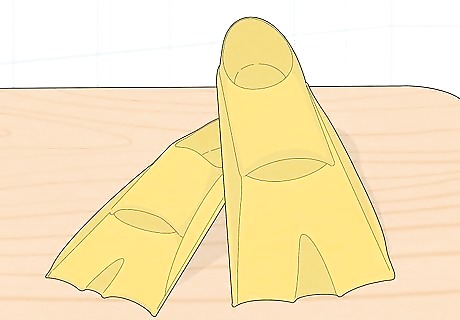
Buy flippers. Using flippers will improve a swimmer’s body position and their technique.Most importantly, they can be used to strengthen your kick to better propel yourself through the water. This propulsion will allow you time to focus on your stroke technique. Using flippers will give you a sense of cutting quickly through the water. Remember this feeling and try to emulate it when you take the fins off. Kicking efficiently is highlighted using flippers, especially if you have a cross-over kick. They will force you to keep your feet a proper distance. They will also help increase your ankle flexibility by streamlining the position of your feet.

Buy a proper suit. This is the number one sign of commitment to swimming. Gone are the bikinis and frills; what’s left is consistent and streamlined. It’s best to think about your goals. Will you be logging long daily pool yardage or just a couple of times a week? Buy a polyester blend if you’ll be spending lots of time in the water. If cared for properly, they can last for years. Buy lycra swimwear if you won’t be in the pool daily. It’s soft, comfortable, and is known for its expansive stretchiness. Keep in mind though, that no material is impervious to chlorine so always pay attention to the manufacturer’s instructions.

Buy pull buoys and kickboards. Both of these are designed to isolate your arms or your legs to better strengthen your techniques. While they are not strictly necessary (you can achieve the same effect by holding your hands together and focusing only on your kicks, or by tucking your feet together and only focusing on your strokes), they are wonderful at supporting your arms and legs as you move through the water. Pull buoys and kickboards are a great resource to have if you have an injury. You can keep up with your workouts and rest the part of your body that is injured at the same time.
Training on Dry Land

Focus on the muscle endurance needed for swimming. Back muscles, biceps, shoulders, triceps for upper body workouts that will build endurance with strength should be highlighted. However, high rep endurance is needed for the legs. Combining a maximum repetition of pullups and resting with flutter kicks can improve endurance.
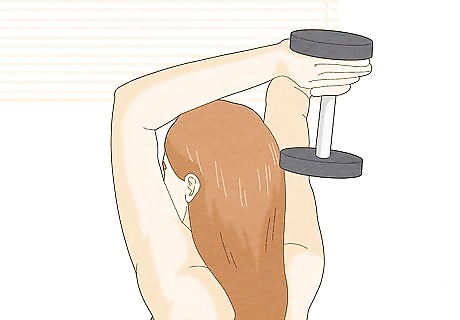
Use the weight room. Bent-over rows and bicep curls, and isolating triceps, abdominals, and the lower back are all great exercise for your swimming muscles. They should be done with moderate weight and high reps (15-20 per set).
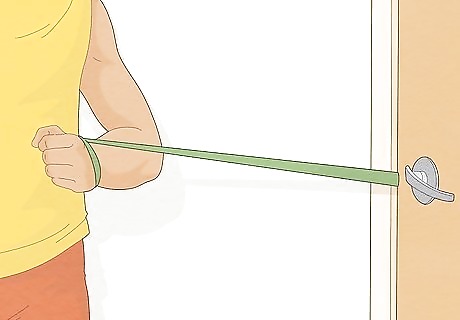
Utilize rubber bands. Secure them to a tree or a door knob. Let the natural resistance work you out the same way water works. Make sure you secure the band to something really stable. A sudden jolt from something breaking can lead to injury.
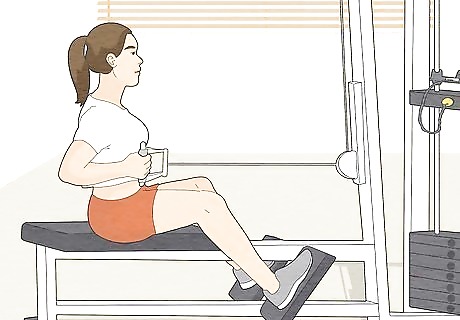
Run, bike, row, dance, use the elliptical or the stair machine. Involving yourself with cardiovascular activities will always help your general health, and actively keeping fit will help your body stay ready for when you hit the water again.



















Comments
0 comment